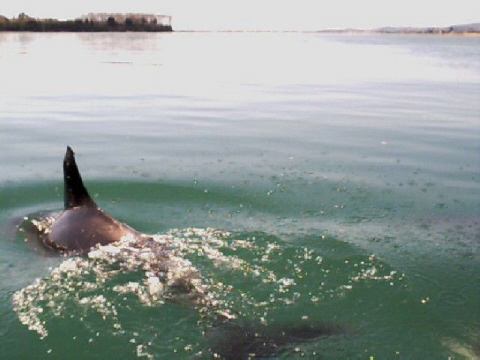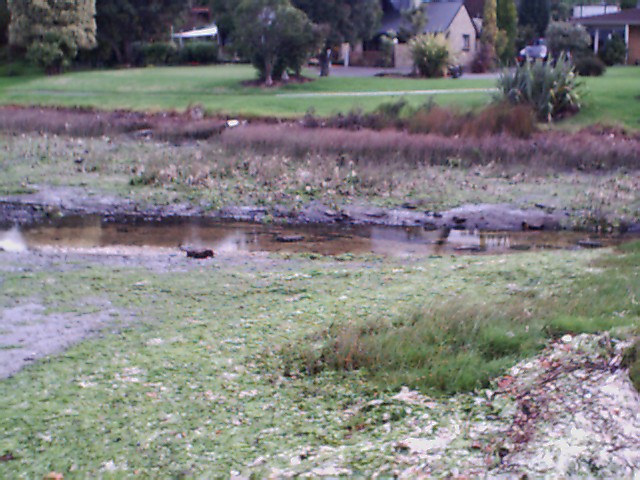 |
 |
| Autumn 2001: A pod of dolphins enters the Tauranga harbour near Mt Maunganui and swims past Matua to play near Motuhoa. You would think that the prime water-front real estate of Matua would be a beautiful place to live? | Autumn 2003: A high level of nutrients in stormwater run-off has given rise to a bloom of sea-lettuce. The weed lies inches thick across the once beautiful beaches of Matua, stinking as it rots in the sun. This began as a seasonal bloom ocurring some years, and is now established as a permanent feature of Matua, Omokoroa and other famous family beaches in the Tauranga harbour. |
| Bay of
Plenty Times, 1998 NIWA has spent twelve months looking into the phenomena of sea lettuce in the Tauranga Harbour and warns there could be a huge “bloom” this year. Last summer Tauranga D.C. spent over $90,000 cleaning the Matua foreshore of the pest, but has no budget for such cleaning this year. Bay of Plenty R.C. turned down its application for funding on the basis that the phenomena was a natural occurrence. |
 |
| Bay of Plenty Times,
1991 Timing of the Matua sea lettuce bloom mirrors the timing of the Maketu Estuary sea lettuce bloom, which has been observed to annually coincide with seasonal pasture growth rates. Pasture growth rates are largely dependent upon seasonal weather patterns and upon soil nutrient levels. As seasonal weather patterns have remained unchanged the significant increase in sea lettuce spring growth rates must be attributable to an increase in nutrient levels. Sea lettuce is but one example of the disregard that has prevailed both within this country, and upon this planet for the natural health of the waterways. Water right applications to discharge effluent are currently being heard within this region and one might well ask what right they have to pollute our water. The rivers and streams of our world are mirrored by the arteries and veins of our bodies. |
|
| What is Sea Lettuce? Sea lettuce is a bright green marine macro algae found around the world on rocks along sheltered rocky coasts and in shallow estuaries. The sea lettuces are collectively grouped under the category of Ulva species. Ulva is a macrophyte algae (as opposed to a planktonic algae), which grows in sheets two cells thick usually less than 30cm in diameter. Ulva is rich in nutrients such as vitamin A and B. Early Maori used the completely edible sea lettuce in cooking. Sea lettuce is still eaten today in salads and stews around the world. It is a very vigorous grower which adapts readily to changing conditions. Rotting Sea Lettuce - Why such a problem? Sea lettuce can grow very fast when nutrients, temperature and light conditions are favourable. Biomass can increase at a rate of up to 20% per day. Wave action causes the organism to break off from its growth beds and be washed ashore where it rots. The smell can be very offensive because of the high sulphur content of sea lettuce. The offensive smell can occur intermittently between late November and early April. What Factors Influence Sea Lettuce Growth? Increased levels of nitrogen and phosphorous in coastal waters in particular agricultural runoff is often carried down to the sea in the rivers. Sea lettuce grows more in spring. Growth rates are linked to temperature with growth decreasing below 15oC and above 20oC. Growth is light sensitive so the lack of light with increasing depth means that the algae prefers shallow water. More information on the problem is available from the http://www.envbop.govt.nz website. use the 'search website' feature to look for 'sea lettuce'. |
|